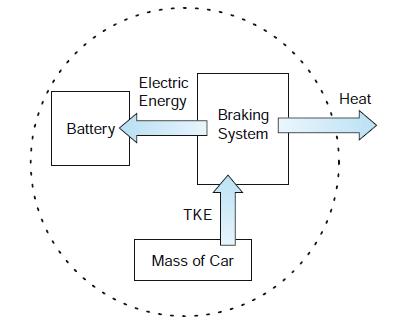Suppose the car in Exercise 23 has a mass of 1000. kg and is traveling at 33.5
Question:
Suppose the car in Exercise 23 has a mass of 1000. kg and is traveling at 33.5 miles per hour. As it comes to a stop, the regenerative braking system operates with 75% efficiency. How much energy per stop can the regenerative braking system store in the battery? Illustrate with a control boundary showing the energy flows.
Exercise 23
A hybrid car is an automobile that achieves high fuel efficiency by using a combination of thermal energy and electrical energy for propulsion. One of the ways it achieves high fuel efficiency is by regenerative braking. That is, every time the car stops, the regenerative braking system converts part of the TKE of the car into electrical energy, which is stored in a battery. That stored energy can later be used to propel the car. The remaining part of the TKE is lost as heat. Draw a control surface diagram showing the energy conversions that take place when the hybrid car stops. (A: See diagram below.)

Step by Step Answer:

Exploring Engineering An Introduction to Engineering and Design
ISBN: 978-0123747235
2nd edition
Authors: Philip Kosky, George Wise, Robert Balmer, William Keat





